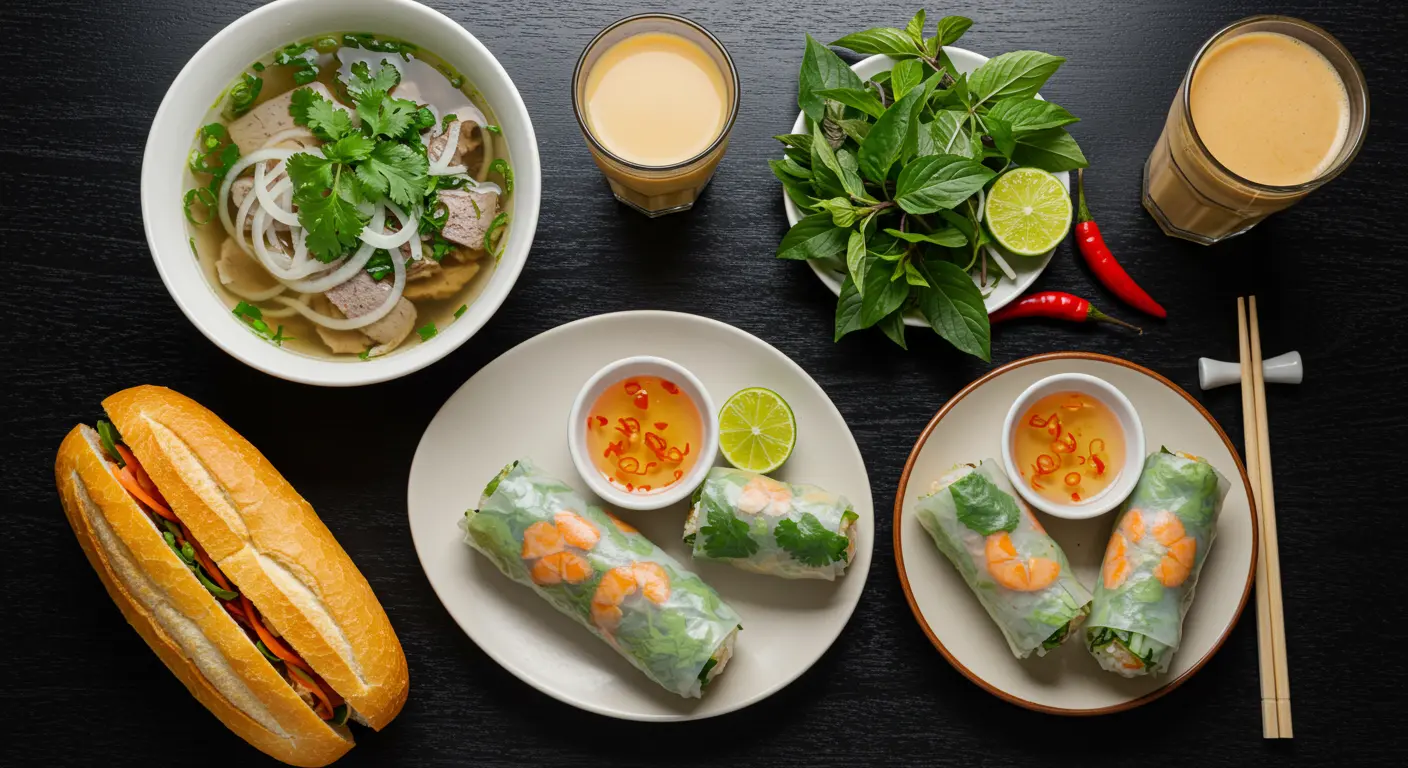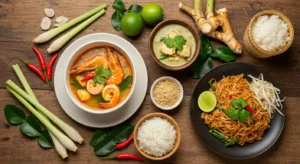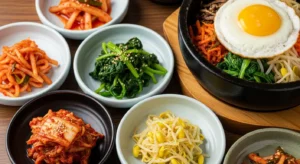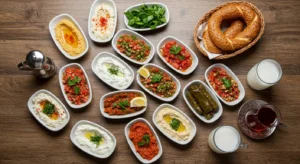Table of Contents
Vietnamese Food: More Than Just Pho (But Let’s Start There!)
You’ve seen the pictures. A steaming bowl of fragrant broth, alive with fresh herbs, silky noodles, and tender meat. You’ve heard the names whispered with near-reverence by food-loving friends: Pho, Banh Mi, Summer Rolls. Vietnamese food is having a moment, but to call it a trend is to miss the point entirely. This is a cuisine with a deep, rich soul, shaped by history, geography, and a profound respect for balance.
If you’ve ever stared at a menu feeling a little intimidated, wondering what all those accents mean or what you should order first, you’re in the right place. Consider this your friendly, no-stress guide. We’re about to dive into the vibrant world of Vietnamese flavors, unravel its delicious mysteries, and give you the confidence to explore it one incredible bite at a time.
So, grab a cup of tea (or a strong Vietnamese iced coffee!), and let’s get started.
The Heartbeat of the Cuisine: It’s All About Balance
Before we talk about specific dishes, you need to understand the philosophy that makes Vietnamese food so uniquely satisfying. It’s a cuisine built on the principle of Âm-Dương – or Yin and Yang. This isn’t just spiritual; it’s practical. It translates directly to the plate as a constant pursuit of balance.
Chef and culinary authority Andrea Nguyen, author of the James Beard Award-winning book “The Pho Cookbook“, often emphasizes this. She notes that a great Vietnamese dish perfectly harmonizes five fundamental taste elements:
- Salty (Mặn): From fish sauce (nước mắm*), the umami-packed backbone of the cuisine.
- Sour (*Chua): A squeeze of lime or a tang of vinegar to cut through richness.
- Sweet (*Ngọt): Often from caramelized sugar in savory dishes or fresh fruit.
- Bitter (*Đắng): Found in bitter melon or certain herbs.
- Spicy (*Cay): The heat from chili peppers or fresh peppercorns.
But it goes beyond taste. There’s a balance of textures (crunchy with soft, chewy with silky), temperatures (hot grilled meat with cool noodles), and colors. This holistic approach is what makes a meal feel so complete and nourishing.
Your First-Timer’s Menu: 5 Dishes You Absolutely Must Try
Okay, let’s get to the good stuff. Here’s a starter pack of iconic dishes that will give you a perfect introduction to the range of Vietnamese cuisine.
1. Phở: The National Treasure
Let’s get the big one out of the way. Phở (pronounced like “fuh,” with a rising question-like tone) is a hearty noodle soup that’s eaten any time of day, but it’s famously a breakfast staple. It’s far more than just “beef noodle soup.”
- The Broth is the Soul: A truly great phở broth is clear, deeply aromatic, and complex. It’s made by simmering beef bones (for phở bò) or chicken (for phở gà) for hours with charred onion, ginger, and a warm spice blend featuring star anise, cloves, and cinnamon. The result is a fragrant, savory liquid that’s surprisingly light, not greasy.
- The Experience: A bowl arrives with perfectly cooked rice noodles, thin slices of beef (which cook in the hot broth), and a side plate of fresh herbs like Thai basil, cilantro, and sawtooth herb. You add your own bean sprouts, a squeeze of lime, and a dash of chili sauce or hoisin sauce to make it your own. It’s interactive, comforting, and unforgettable. My first real bowl of phở on a rainy day in Hanoi is a core memory—it was like a warm hug from the inside out.
2. Bánh Mì: The Perfect Fusion Sandwich
A legacy of the French colonial era, the Bánh Mì is a beautiful collision of two worlds. It’s a testament to Vietnamese ingenuity, taking a French baguette and transforming it into something entirely its own.
- The Anatomy of Perfectness: The key is the bread: a Vietnamese baguette that’s impossibly light and crispy on the outside, yet soft and airy inside. It’s then packed with a symphony of fillings: usually some combination of grilled pork, pâté, Vietnamese cold cuts, pickled daikon and carrots (for that essential sour crunch), fresh cilantro, cucumber, and a slick of mayonnaise and chili.
- Why It Works: Every single bite delivers a cacophony of textures and flavors—salty, savory, sour, sweet, crunchy, soft. It’s a handheld masterpiece. You can find fantastic bánh mì at dedicated sandwich shops, and it’s the ultimate quick, cheap, and satisfying meal.
3. Gỏi Cuốn: Fresh Spring Rolls
Also called Summer Rolls, these are the fresh, unfried version of spring rolls. They’re translucent, light, and feel incredibly healthy.
- What’s Inside? A delicate rice paper wrapper is softened in water and then rolled up with shrimp, slices of pork, rice vermicelli noodles, and a generous bunch of fresh mint and other herbs.
- The Essential Dip: The real magic happens when you dip them in nước chấm, the ubiquitous Vietnamese dipping sauce. It’s a perfect balance of fish sauce, lime juice, sugar, water, and garlic/chili. It’s salty, sour, sweet, and spicy all at once—the sauce embodiment of the cuisine’s philosophy.
4. Bún Chả: Hanoi’s Grilled Pork Delight
If Pho is Vietnam’s most famous dish, Bún Chả might be its most beloved lunch. It skyrocketed to international fame after Anthony Bourdain enjoyed it with President Obama in Hanoi.
- How It’s Served: You get a bowl of a sweet, tangy, and slightly smoky broth filled with grilled fatty pork patties (chả viên) and slices of grilled pork belly (chả miếng). On a separate plate, you have a pile of cold rice vermicelli noodles (bún) and a mountain of fresh herbs and greens.
- How to Eat It: You dip the noodles and herbs into the porky broth, gathering a little bit of everything in one bite. It’s interactive, refreshing, and deeply savory all at once.
5. Cà Phê Sữa Đá: The Caffeinated Fuel
You can’t talk about Vietnamese food without mentioning the coffee. Vietnamese coffee is a strong, dark roast, often brewed with a small metal drip filter (phin) right at your table. The classic preparation is Cà Phê Sữa Đá: iced coffee with sweetened condensed milk.
The robust, almost chocolaty coffee cuts through the intense sweetness of the milk, creating a decadent, energizing drink that’s the perfect cap to any meal—or the essential afternoon pick-me-up.
Navigating Your First Visit to a Vietnamese Restaurant
Feeling inspired to try one? Here’s how to walk in like a pro.
- Don’t be shy about the condiments. The jars of chili sauce, hoisin, and the tray of herbs, lime, and sprouts are there for a reason. Taste your dish first, then customize it to your liking. That’s how it’s meant to be enjoyed!
- Embrace the herbs. Fresh herbs aren’t just a garnish; they are a vital ingredient. Don’t just push them to the side—mix them in! They add crucial freshness and flavor.
- Start with the classics. Use the list above as a starting point. Most restaurants will have these dishes, and they’re classics for a reason.
- Ask questions! Servers are usually happy to explain dishes. A simple, “What’s your most popular dish?” or “Could you describe this for me?” goes a long way.
For an incredible deep dive into the history and recipes of this cuisine, the Vietnam National Administration of Tourism has a wonderful section on their site dedicated to food, which shows just how central it is to the country’s culture.
Frequently Asked Questions (FAQs)
Q: What is the most important ingredient in Vietnamese cooking?
A: Without a doubt, it’s nước mắm (fish sauce). This fermented anchovy sauce is used like salt and provides a deep, savory, umami base for countless dishes, from soups to dipping sauces. Don’t be put off by the smell; when used correctly, it adds an irreplaceable depth, not a fishy taste.
Q: Is Vietnamese food generally healthy?
A: It can be very healthy! The cuisine relies heavily on fresh herbs, vegetables, lean proteins like chicken and seafood, and broths. However, some dishes can be high in carbs (noodles) and sugar (in marinades and sauces). But the emphasis on fresh ingredients and balance makes it a great choice for a nutritious meal.
Q: I’m a vegetarian. Can I still enjoy Vietnamese food?
A: Absolutely! While fish sauce is ubiquitous, many restaurants offer vegetarian versions using soy sauce. There is a strong Buddhist vegetarian tradition in Vietnam, so you’ll find amazing dishes like Phở Chay (vegetarian phở), crispy vegetarian spring rolls, and tofu-stuffed dishes.
Q: What’s the difference between a spring roll and a summer roll?
A: This is a common point of confusion. Spring Rolls (Chả Giò) are crispy and fried, with a wheat-flour wrapper. Summer Rolls (Gỏi Cuốn) are fresh, soft, and not cooked after rolling, using a translucent rice paper wrapper. Both are delicious!
Q: How do I pronounce “Phở” correctly?
A: It’s a single syllable, but the tone is crucial. It’s not “foe.” Try saying “fuh” but with a rising tone, as if you were asking a question. Listen to a quick audio clip online—it will click instantly!
Your Flavor Adventure Awaits
Vietnamese food is a journey of discovery. It’s a cuisine that invites you to play with your food, to mix and match, and to find your own perfect balance in every bowl, sandwich, and roll. It’s humble, yet incredibly sophisticated in its approach. It’s built on a foundation of history and hardship, but expresses pure joy and community through every shared meal.
So, the next time you’re wondering where to eat, take a chance on that little Vietnamese spot in your neighborhood. Order a bowl of phở or a bánh mì. Take that first bite. You’re not just tasting food; you’re tasting a story.




